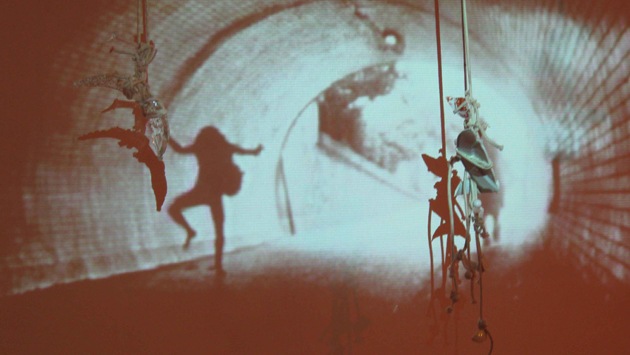Unlikely Savages
Curated by Carla Macchiavello
Multimedia Group ExhibitionMarch 24 - April 30, 2011

Unlikely Savages presents works that question the continuity of the savage paradigm in Latin America along with the ideologies of dominion and violence that support it. Through a dialogue of related themes (technology, archives, violence) and mediums (video, installation, text), the exhibition attempts to put in tension a variety of positions regarding images of ‘the uncivilized’ both within and outside of Latin America. Though ideas of savagery seem to have changed forms, leaving the colonial world behind to reemerge as the extreme violence often associated with political questions, oppressive regimes, revolutionaries, and more recently drugs, the term is still deeply enmeshed with battles of dominion and representation. The works in this exhibition address some of the convoluted relations between the so-called first and third worlds through an extended notion of ‘savagery’.
Featuring:
Andrés Burbano (Colombia)
Elkin Calderón (Colombia)
Wilson Díaz (Colombia) [works courtesy of Valenzuela & Klenner]
Diego Lama (Peru)
Alejandro Moreno (Chile)
Ernesto Salmerón (Nicaragua)
Manuela Viera-Gallo (Chile) [works courtesy of Y Gallery]
About the Works
Text by Carla Macchiavello
The exhibition opens with a wall text by Elkin Calderón, which introduces the contradictions of being a successful Latin American artist dealing with themes of violence, as in the case of the renowned Colombian artist Doris Salcedo. Through a first person narration, badly translated and copied, Calderón plays with stereotypes regarding civilized artistic behavior. The work enters in dialogue with the video installation by Manuela Viera-Gallo (Chile, 1975), who posits the existence of a third world in every first world through shards and glimpses of savage behavior. In works like “Undercover”, ceramic black crows watch through white sacks the gallery’s visitors, establishing an ambience of suspicion regarding others. Violence reemerges in two video works of Alejandro Moreno (Chile), which re-conceptualize aggressive ritual and its connection to Western fantasy and gender identity through hybrid myths and the crude violence of sexual stereotypes (“La Chata”). Imaginary violence is also evoked in a double video projection by Diego Lama (Peru, 1980), where oneiric images organized in chapters explore the architecture of power influencing the construction of a savage Latin America. This dream-like quality is countered by the documentary works of Wilson Díaz (Colombia) that delve on the entangled ways in which tradition, popular culture, violence, and warfare continually displace notions of primitive and civilized behaviors. In his drawings with a type of pencil made out of coke leaves and video “Rebeldes del sur”, nature, resources, music, and war are joined to question the roles of those involved in the drug conflict. The relationship between the primitive, violence, and otherness has been central to the revisions of the archive as a system of knowledge and the reproduction of power relations in the works of Ernesto Salmerón (Nicaragua, 1977). Opening up the limits of knowledge neatly classified in the archive, Salmerón brings disparate sources of external visions concerning the Americas and some of its most complicated agents in the video “El Danto”. In between clips, projections, and images coming from archival interviews with the son of guerrilla leaders from Nicaragua and U.S. supported propaganda material, a different picture of the Americas may be glimpsed. The exhibition closes with a video and text installation by Andrés Burbano (Colombia) in which the artist’s own expectations regarding his home country uncivilized others clash full front with the native’s realities. Coming full circle and joining Calderón’s initial text through its reference to language and translation, Burbano’s installation leaves an open question regarding the present and future relations between technology, power, minorities, and dominant cultures in an interconnected world.
